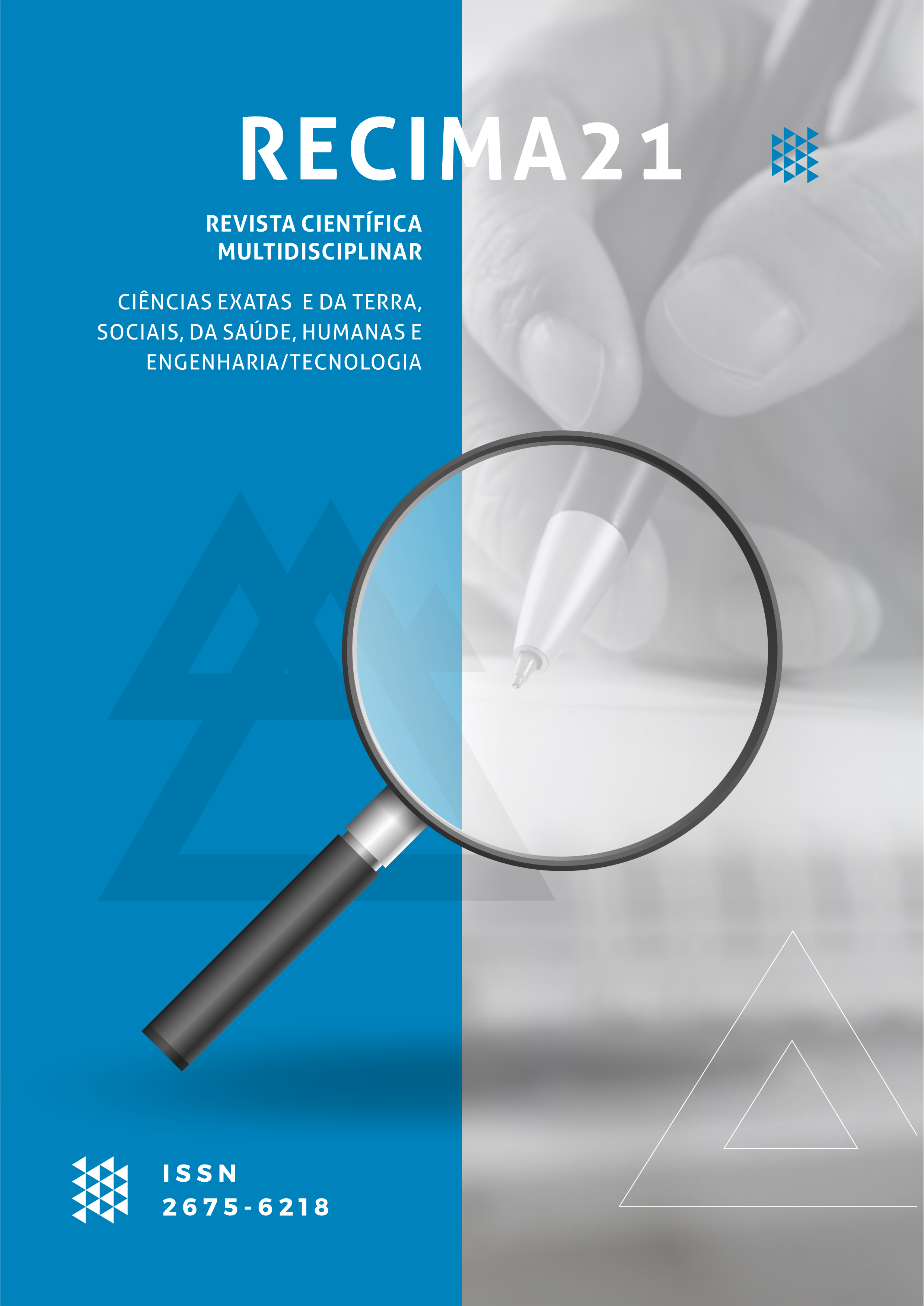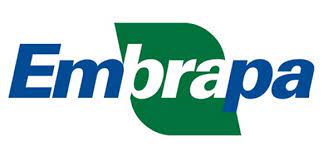THE EFFECTS OF HIBISCUS SABDARIFFA AND ITS NUTRITIONAL CHARACTERISTICS
DOI:
https://doi.org/10.47820/recima21.v3i12.2436Keywords:
Effects. herbal medicine. Hibiscus. Nutrients.Abstract
Hibiscus sabdariffa tea is used as a medicinal plant and functional food in several countries, since it has antioxidant properties and has a representative value of anthocyanins, vitamin C, large amount of phyto compounds and polyphenols, cytotoxic, antimutagenic and antimetic activity. This study aimed to conduct a review of the literature on the nutritional and herbal benefits of hibiscus sabdariffa and its effects on human health. A bibliographic review was carried out, of deductive method, of qualitative and descriptive approach, through the research of scientific articles carried out on the Scielo and Google academic platforms, with time cut from 2012 to 2022, to verify the effects and nutritional characteristics of hibiscus sabdariffa. Research concludes that sabdariffa hibiscus tea is able to reduce adipogenesis, i.e. helps prevent fat accumulation, has diuretic effect, so it is an ally to prevent fluid retention, contributes to lowerbad cholesterol, and increases good cholesterol, helps lower blood pressure, and has good amounts of vitamins B1 and B2, which is good for the brain, being promising for use as herbal medicine, besides having several nutritional benefits, acting as an important aid in the control of various pathologies such as obesity, high cholesterol, hypertension, among others. However, there is a need to further intensify studies to prove therapeutic effects, in addition to defining the best doses to be used according to each pathology.
Downloads
References
BASTOS, Thiago Vinicius de Souza. Utilização do hibisco (hibiscus sabdariffa) no controle da pressão arterial: uma revisão da literatura. 2021. Disponível em: http://dspace.sti.ufcg.edu.br:8080/jspui/bitstream/riufcg/23956/1/THIAGO%20VINICIUS%20DE%20SOUZA%20BASTOS%20%20TCC%20BACHARELADO%20EM%20FARM%C3%81CIA%20CES%202022.pdf. Acesso em: 09 out. 2022.
BOURQUI, Angelique et al. Hypertension treatment with Combretum micranthum or Hibiscus sabdariffa, as decoction or tablet: A randomized clinical trial. Journal of Human Hypertension, v. 35, n. 9, p. 800-808, 2021. Disponível em: https://pubmed.ncbi.nlm.nih.gov/32948827/. Acesso em: 29 out. 2022.
CARVALHO, Giovana Sabriny. Propriedades funcionais do hibiscus sabdariffa, aplicações clínicas e contraindicações. 2018. Disponível em: https://rdu.unicesumar.edu.br/bitstream/123456789/842/1/TRABALHO%20DE%20CONCLUS%C3%83O%20DE%20CURSO%20%28TCC%29.pdf. Acesso em: 25 out. 2022.
COELHO, Caroliny Almeida; AMORIM, Bruno S. Expandindo a distribuição geográfica de Hibiscus sabdariffa L. (Malvaceae): uma espécie naturalizada e negligenciada para a flora brasileira. Hoehnea, v. 46, n. 1, 2019. Disponível em: https://www.scielo.br/j/hoehnea/a/SFpkCfdW9vwMxzh43WQf5pD/?lang=pt&format=pdf. Acesso em: 05 out. 2022.
COSTA, E. A. Nutrição e fitoterapia: tratamento alternativo através das plantas. 3. ed. Vozes: Petrópolis, RJ, 2014.
DIETARY REFERENCE INTAKES. For energy, carbohydrate, fiber, fat, fatty acids, cholesterol, protein, and amino acids. Institute of medicine. Washington (DC): National Academy Press; 2005. Disponível em: https://pubmed.ncbi.nlm.nih.gov/12449285/. Acesso em: 28 out. 2022.
ELKAFRAWY, Nabil et al. Antihypertensive efficacy and safety of a standardized herbal medicinal product of Hibiscus sabdariffa and Olea europaea extracts (NW Roselle): A phase II, randomized, doublegblind, captoprilgcontrolled clinical trial. Phytotherapy Research, v. 34, n. 12, p. 3379-3387, 2020. Disponível em: https://pubmed.ncbi.nlm.nih.gov/32725873/. Acesso em: 29 out. 2022.
FREITAS, Nélio Martins; SANTOS, Angela Maria Correa Mouzinho; MOREIRA, Lucy Rose de Maria Oliveira. Avaliação fitoquímica e determinação de minerais em amostras de Hibiscus sabdariffa L. (vinagreira). Cadernos de Pesquisa, p. 65-72, 2013. Disponível em: http://periodicoseletronicos.ufma.br/index.php/cadernosdepesquisa/article/view/2265/364. Acesso em: 05 out. 2022.
IZQUIERDO, Jeannett A. Vega et al. Ácidos orgânicos de rosela (Hibiscus sabdariffa L.) Uma breve revisão de seus efeitos farmacológicos. (traduzido). Biomedicines, v. 8, n. 5, p. 100, 2020. Disponível em: https://pubmed.ncbi.nlm.nih.gov/32354172/. Acesso em: 07 out. 2022.
LASKAR, Yahyea Baktiar; MAZUMDER, Pranab Behari. Entendimento sobre as evidências moleculares que suportam o notável potencial quimioterápico do Hibiscus sabdariffa L. (traduzido). Biomedicine & Pharmacotherapy, v. 127, p. 110153, 2020. Disponível em: https://pubmed.ncbi.nlm.nih.gov/32344257/. Acesso em: 09 out. 2022.
LORENZI, H.; MATOS, F.J.A. Plantas Medicinais no Brasil, Nativas e Exóticas. Instituto Plantarum de Estudos da Flora LTDA. São Paulo, 2002.
MACIEL, Mônica Jachetti et al. Avaliação do extrato alcoólico de hibisco (Hibiscus sabdariffa L.) como fator de proteção antibacteriana e antioxidante. Revista do Instituto Adolfo Lutz, 2012. Disponível em: https://docs.bvsalud.org/biblioref/ses-sp/2012/ses-26940/ses-26940-3995.pdf. Acesso em: 28 out. 2022.
MENDES, Olga Rabelo. Avaliação da atividade antioxidante da flor de (hibiscus sabdariffa l.) comercializada no município de Palmas – TO. 2015. Disponível em: https://ulbra-to.br/bibliotecadigital/uploads/document55e9d7b406f01.pdf. Acesso em: 12 out. 2022.
NWACHUKWU, Daniel Chukwu et al. Does consumption of an aqueous extract of Hibiscus sabdariffa affect renal function in subjects with mild to moderate hypertension?. The Journal of Physiological Sciences, v. 67, n. 1, p. 227-234, 2017. Disponível em: https://pubmed.ncbi.nlm.nih.gov/27221151/. Acesso em: 28 out. 2022.
OMS. Organização Mundial da Saúde. 2007. World Health Organization – WHO. Statistical Information System (WHOSIS). Disponível em: http://www.who.int/whosis/whostat/EN_WHS09_Tables.xls. Acesso em: 30 set. 2022.
OJULARI, Oyindamola Vivian; LEE, Seul Gi; NAM, Ju-Ock. Efeitos benéficos de compostos bioativos naturais de hibiscus sabdariffa L. na obesidade. Moléculas. (traduzido). v. 24, n. 1, p. 210, 2019. Disponível em: https://www.preprints.org/manuscript/201811.0631/v1/download. Acesso em: 11 out. 2022.
PEDROSO, Reginaldo dos Santos; ANDRADE, Géssica; PIRES, Regina Helena. Plantas medicinais: uma abordagem sobre o uso seguro e racional. Physis: Revista de Saúde Coletiva, v. 31, 2021. Disponível em: https://www.scielo.br/j/physis/a/kwsS5zBL84b5w9LrMrCjy5d/. Acesso em: 31 out. 2022.
RAMIREZ, Milena M. Rodrigues. et al. Physicochemical and phytochemical properties of cold and hot water extraction from Hibiscus sabdariffa. Journal of Food Science, 2011. Disponível em: https://pubmed.ncbi.nlm.nih.gov/21535810/. Acesso em: 27 out. 2022.
RAMOS, D.D. et al. Atividade antioxidante de Hibiscus sabdariffa L. em função do espaçamento entre plantas e adubação orgânica. (traduzido). Ciência Rural, v. 41, n. 8, Agosto, 2011. Disponível em: https://www.scielo.br/j/cr/a/Bs7wMPYTqkdqHgMPh8G39Dm/abstract/?lang=en&format=html. Acesso em: 11 out. 2022.
REIHANI. H; GHAssEMI, M.; MAZER-AMIRSHAHI, M.; ALJOHANI, B. POURMAND,
A. Tratamento não baseado em evidências: uma causa não intencional de morbidade e mortalidade relacionada ao COvID-19. (traduzido). The American journal of emergency medicine v.39, p.221. 2021. Disponível em: https://www.ncbi.nlm.nih.gov/pmc/articles/PMC7202810/. Acesso em: 29 out. 2022.
REVISTA MAIS SAÚDE. Chá de hibisco faz bem. 2022. Disponível em: https://www.maissauderevista.com.br/alimentacao/cha-de-hibisco-faz-bem/. Acesso em: 12 out. 2022.
ROSA, Elisângela da Silva. Características nutricionais e fitoquímicas em diferentes preparações e apresentações de Hibiscus sabdariffa L. (hibisco, vinagreira, rosela, quiabo-de-angola, caruru-da-guiné) - Malvaceae. 2013. Disponível em: https://lume.ufrgs.br/bitstream/handle/10183/87222/000910449.pdf?sequence=1&isAllowed=y. Acesso em: 02 out. 2022.
RUBIRA, Tatiane Helena Sindor; SANTOS, J. F.; VIANA, Aline Coelho. O uso do Hibiscus sabdariffa como alimento funcional. Revista Conexão Eletrônica–Três Lagoas. MS, v. 13, n. 1, 2016. Disponível em: http://revistaconexao.aems.edu.br/wp-content/plugins/download-attachments/includes/download.php?id=882. Acesso em: 09 out. 2022.
SECK, Sidy Mohamed et al. Clinical efficacy of African traditional medicines in hypertension: A randomized controlled trial with Combretum micranthum and Hibiscus sabdariffa. Journal of human hypertension, v. 32, n. 1, p. 75-81, 2018. Disponível em: https://pubmed.ncbi.nlm.nih.gov/29311704/. Acesso em: 29 out. 2022.
SILVA, Nathália Lucca et al. Avaliação da atividade antioxidante e antibacteriana do extrato da flor de Hibiscus sabdariffa e Hibiscus rosa-sinensis. Conexão Ciência (online), v. 14, p. 14-20, 2019. Disponível em: https://periodicos.uniformg.edu.br:21011/ojs/index.php/conexaociencia/article/view/930. Acesso em: 10 out. 2022.
SILVA, Karen Lorena Oliveira. et al. Estratégia de ensino e avaliação do curso de extensão em cultivo de plantas medicinais do jardim botânico do Rio de Janeiro.
SOBOTA, Jociane de Fátima et al. Perfil físico-químico e atividade antioxidante do cálice da espécie Hibiscus sabdariffa L. a partir do extrato aquoso e alcoólico obtidos por infusão e decocto. 2016. Disponível em: https://www.arca.fiocruz.br/bitstream/handle/icict/19243/5.pdf;jsessionid=83E8C5D4CD14BCD3636DB37B57DAEAC3?sequence=2. Acesso em: 01 out. 2022.
Downloads
Published
How to Cite
Issue
Section
Categories
License
Copyright (c) 2022 RECIMA21 - Revista Científica Multidisciplinar - ISSN 2675-6218

This work is licensed under a Creative Commons Attribution 4.0 International License.
Os direitos autorais dos artigos/resenhas/TCCs publicados pertecem à revista RECIMA21, e seguem o padrão Creative Commons (CC BY 4.0), permitindo a cópia ou reprodução, desde que cite a fonte e respeite os direitos dos autores e contenham menção aos mesmos nos créditos. Toda e qualquer obra publicada na revista, seu conteúdo é de responsabilidade dos autores, cabendo a RECIMA21 apenas ser o veículo de divulgação, seguindo os padrões nacionais e internacionais de publicação.

 Clique para ver detalhes
Clique para ver detalhes 











